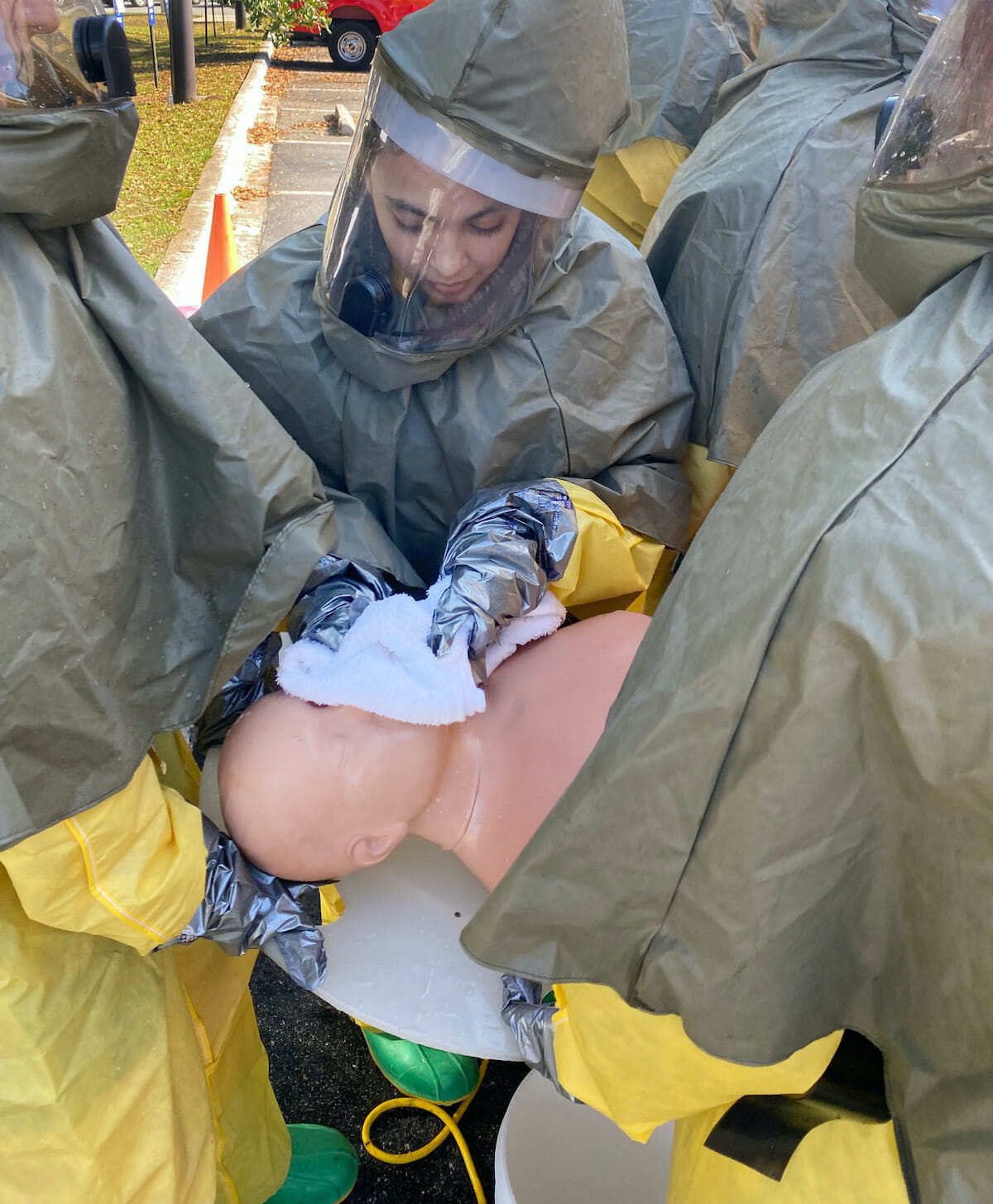According to the VA website at https://www.va.gov/health-care/eligibility/priority-groups/ and at https://bit.ly/3eQ2opS (Information Bulletin), when a veteran applies for VA health care, the Veterans Health Administration (VHA) will assign the veteran to one of eight priority groups. This system helps to make sure that veterans who need care right away can get signed up quickly. It also helps to make sure the VA can provide high quality care to all veterans enrolled in the VA health care program.
The veteran’s priority group may affect how soon the VA signs the veteran up for health care benefits and how much, if anything, the veteran will have to pay toward the cost of his or her care. Learn more about VA health care costs at htttps://www.va.gov/health-care/about-va-health-benefits/cost-of-care/ and view VA copay rates at https://www.va.gov/health-care/copay-rates/.
The VA uses the following factors to assign a veteran to priority group:
The veteran’s military service history, and
The veteran’s disability rating, and
The veteran’s income level, and
Whether or not the veteran qualifies for Medicaid, and
Other benefits the veteran may be receiving (like VA pension benefits).
The VA assigns veterans with service-connected disabilities to the highest priority. The VA assigns the lowest priority to veterans who earn a higher income and who don’t have any service-connected disabilities qualifying them for disability compensation (monthly payments).
If a veteran qualifies for more than one priority group, the VA will assign the veteran to the highest priority group he or she is qualified for. Depending on the veteran’s Priority Group, the VA may reimburse the veteran for travel costs from the veteran’s home to a medical facility.
The VA may assign a veteran to Priority Group 1, if any of the below things are true. The veteran has a service-connected disability that the VA has rated as 50 percent or more disabling, or the veteran has a service-connected disability that the VA concluded makes the veteran unable to work (also called unemployable), or the veteran is a Medal of Honor recipient.
The VA may assign a veteran to Priority Group 2, if the veteran has a service-connected disability that the VA rated as 30 percent or 40 percent disabling.
The VA may assign a veteran to Priority Group 3, if the veteran is a former prisoner of war (POW), or received the Purple Heart, or was discharged for a disability that was caused by — or got worse because of — active-duty service, or the veteran has a service-connected disability that the VA rated as 10 percent or 20 percent disabling, or the VA awarded special eligibility classification under Title 38, U.S.C § 1151, “benefits for individuals disabled by treatment or vocational rehabilitation.”
The VA may assign a veteran to Priority Group 4, if either of the following is true: the veteran is receiving VA aid and attendance or housebound benefits, or the veteran has received a VA determination of being catastrophically disabled.
The VA may assign a veteran to Priority Group 5, if any of the following descriptions are true. The veteran does not have a service-connected disability, or the veteran has a non-compensable service-connected disability that the VA rated as 0 percent disabling, and the veteran has an annual income level that’s below the VA’s adjusted income limits, based on the veteran’s resident zip code, or the veteran is receiving VA pension benefits, or the veteran is eligible for Medicaid programs.
The VA may assign a veteran to Priority Group 6, if any of the below descriptions are true: The veteran has a compensable service-connected disability rated as 0 percent disabling, or
The veteran was exposed to ionizing radiation during atmospheric testing or during the occupation of Hiroshima and Nagasaki, or
The veteran participated in Project 112/SHAD, or
The veteran served in the Republic of Vietnam between Jan. 9, 1962 and May 7, 1975, or
The veteran served in the Persian Gulf War between Aug. 2, 1990, and Nov. 11, 1998, or
The veteran served on active duty at Camp Lejeune for at least 30 days between Aug. 1, 1953 and Dec. 31, 1987
The VA may also assign a veteran to Priority Group 6, if the veteran meets all of the following requirements:
The veteran is currently or newly enrolled in VA health care, and
The veteran served in a theater of combat operations after Nov. 11, 1998, or was discharged from active duty on or after Jan. 28, 2003, and
The veteran was discharged less than 5 years ago.
Note: Returning combat veterans are eligible for these enhanced benefits for 5 years after discharge. At the end of this enhanced enrollment period, the VA will assign the veteran to the highest priority group he or she qualifies for at that time.
The VA may assign a veteran to Priority Group 7, if both of the following are true: The veteran’s gross household income is below the geographically adjusted income limits for where the veteran lives, and the veteran agrees to pay copays. View VA copay rates at https://www.va.gov/health-care/copay-rates/.
The VA may assign a veteran to Priority Group 8, if both of the following descriptions are true for the veteran: The veteran’s gross household income is above VA limits and geographically adjusted income limits for where the veteran lives, and the veteran agrees to pay copays.
If a veteran is assigned to priority group 8, the veteran’s eligibility for VA health care benefits will depend on which of the six sub-priority groups the VA places the veteran in. Veterans may be eligible for VA health care benefits, if the VA places the veteran in one of the following sub-priority groups:
Sub-Priority Group“A” – All of these must be true. The veteran has a non-compensable service-connected condition that the VA rated as 0 percent disabling, and is enrolled in the VA health care program before Jan. 16, 2003, and have remained enrolled since that date and/or were placed in this sub priority group because the veteran’s eligibility status changed
Sub-Priority Group “B” – All of these must be true. The veteran has a non-compensable service-connected condition that the VA rated as 0 percent disabling, and the veteran is enrolled in the VA health care program on or after June 15, 2009, and the veteran has income that exceeds current VA or geographical limits by 10 percent or less
Sub-Priority Group “C” – All of these must be true. The veteran does not have a service-connected condition, and is enrolled in the VA health care program as of Jan. 16, 2003, and has remained enrolled since that date and/or were placed in this sub-priority group because the veteran’s eligibility status changed.
Sub-Priority Group “D” – All of these must be true. The veteran does not have a service-connected condition, and is enrolled in the VA health care program on or after June 15, 2009, and has income that exceeds current VA or geographical limits by 10 percent or less.
Veterans are not eligible for VA health care benefits, if the VA places the veteran in one of these sub-priority groups:
Sub-Priority Group “E” – All of these must be true. The veteran has a non-compensable service-connected condition that the VA rated as 0 percent disabling, and the veteran does not meet the criteria for sub-priority group A or B above
Note: Veterans are eligible for care for their service-connected condition only.
Sub-Priority Group “G” – All of these must be true. The veteran does not have a service-connected condition, and does not meet the criteria for sub-priority group C or D, above.
A veteran’s priority group may change in some cases, such as if: the veteran’s income changes, or the veteran’s service-connected disability gets worse and the VA gives the veteran a higher disability rating.
If a veteran is currently enrolled or newly enrolled in the VA health care program, and the veteran served in a theater of combat operations after Nov. 11, 1998, or was discharged from active duty on or after Jan. 28, 2003, the veteran is eligible for enhanced benefits for five years after discharge.
During this time, the VA will assign the veteran to Priority Group 6. At the end of this enhanced enrollment period, the VA will assign the veteran to the highest priority group he or she qualifies for at that time.
Veterans can read about their VA health care benefits at https://www.va.gov/health-care/about-va-health-benefits/. Veterans can read about veteran eligibility for health care at https://www.va.gov/health-care/eligibility/.
Filing a claim or understanding VA Health Care Priority Groups can be confusing, therefore using a Veterans Service Officer (VSO) or another certified adviser is always smart. There is a County VSO Office in each country in S.C. These county VSOs are highly trained and they provide free services to veterans. S.C. County Vet Affairs Offices contact information can be found at https://scdva.sc.gov/county-veterans-affairs-offices .
The Beaufort County Veterans Service Office is located at 100 Clear Water Way, Beaufort, S.C. 29906, Phone: 843-255-6880 and FAX: 843-255-9445. The office is open from 8 a.m. to 5 p.m., Monday-Friday, by appointment only. The website is https://www.beaufortcountysc.gov/veterans-affairs/index.html.
Larry Dandridge is a retired Lt. Col. In the U.S. Army. He is a Vietnam War era wounded warrior, a combat and 100 percent disabled veteran, a former Infantryman, former Warrant Officer and pilot. Dandridge is also a past Veterans Service Officer, and a current volunteer Patient Adviser, CEO Advisory Council Member, and Patient and Family Advisory Committee Member at the RHJ VA Medical Center, as well as a published author and free-lance writer. He can be reached at LDandridge@earthlink.net.








